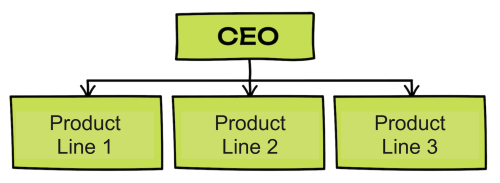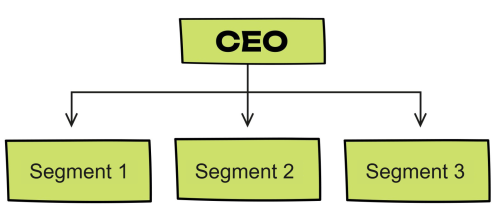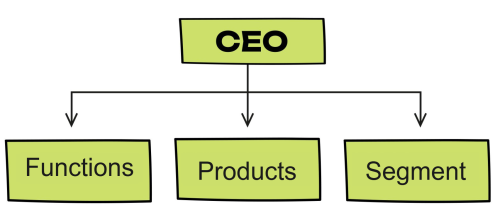The basic structure of an organization must align with the strategy you choose. Unfortunately, many companies define their structure not through strategic analysis but through guesses, examples of well-known organizations, or fashionable approaches. As a result, they often end up with a structure that hinders strategy, provokes conflicts between units, creates excessive coordination, and fails to develop the organizational capabilities the business actually needs.
To understand whether your current structure supports your strategy, I suggest a simple exercise: walk through the four basic types of organizational structures and check which characteristics match your context.
Recently I worked with a group of top executives who went through this exercise during a workshop. Their reaction was very telling. By the end, they literally said:
“The structure we currently have is exactly the one that does not suit us.”
Why? Because they simply walked through the same exercise that I’m about to offer you.
The Four Basic Organizational Structures
There are only four fundamental ways an organization (or any individual unit inside it) can be structured.
Functional organization:
A classical division based on functions: IT, logistics, sales, marketing, compliance, etc.

Functional structure
Product Structure
Autonomous divisions formed around product lines. This means that the top level of the organization consists of product-based units, and within each of them you can still have a functional structure.
In other words, each product may have its own marketing, sales, engineering, etc.

Product structure
Autonomous divisions built around customer segments. Segmentation can be:
Geographic (countries, regions)
By events or JTBD (“I’m buying a car”, “I’m receiving money”)
By role (“carrier”, “shipper”)
By industry (“used cars”, “new cars”, “aviation”, “public sector”)

Product structure
Just as in product organizations, each segment can have its own functional organization inside it: marketing, sales, operations, development, etc.
Multidimensional (Hybrid) Structure
This is used when the organization wants to remain both product-based and customer-based — or when it combines product, segment, and functional logic simultaneously (for example, to achieve economies of scale).
At the top level, such an organization may have different types of units coexisting: functional, product, and customer, and even geographic simultaneously.

Multidimensional structure
How to Understand Which Structure Fits Your Organization
Below are the characteristics associated with each type of structure. Go through all the items and mark them with two flags:
- Red — characteristics that do not fit your context and should be avoided
- Green — characteristics that describe your organization well
Once you finish, look at the patterns. You will likely see one or two structural types standing out — the ones with the most green and fewest red marks. These are the structures that best fit your business.
Functional organizations:
- Have a single line of business.
- They are small.
- Require common standards.
- Have a core capability that requires depth of expertise in one or more functional areas.
- Don’t have a diverse line of products.
- Don’t compete in the marketplace based on speed of product development cycle times.
Product organizations:
- Compete on the basis of product features or being first in the market.
- Produce multiple products for separate market segments.
- Produce products with short life cycles; speed in product development time is an advantage.
- Have a large enough organization to achieve the minimum efficient scale required to duplicate functions across the organization.
Сustomer (segment) organizations:
- Important market segments where buyers have strength.
- Customer knowledge provides an advantage.
- Rapid customer service and product cycle times are required.
Multidimensional or hybrid organizations:
- Are large and have multiple product lines and market segments.
- Serve global customers and must have cross-border coordination.
- Need to maximize both customer and product excellence.
- Have managers skilled in managing complexity.
If the results of the exercise show that your current structure does not support your strategy, this is not a failure — it is a signal. A signal that it is time to redesign your organizational structure so that it works for the strategy, not against it.
To explore the topic more deeply, you can read the book Creating Agile Organizations.
